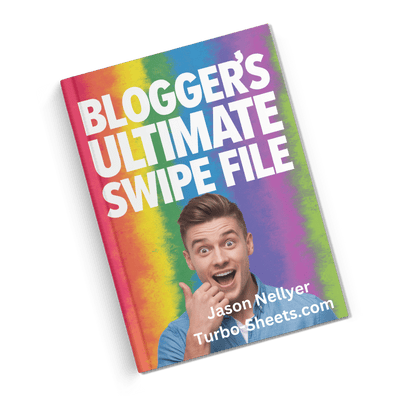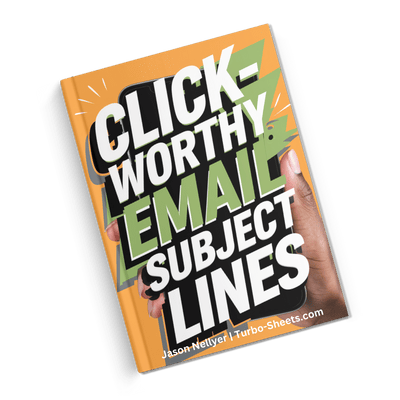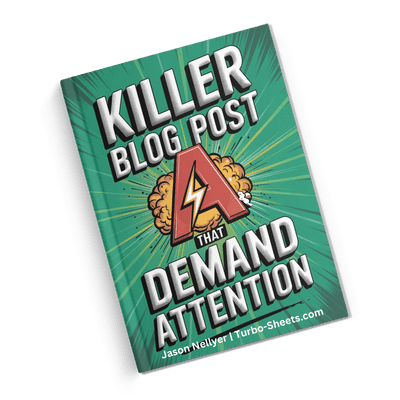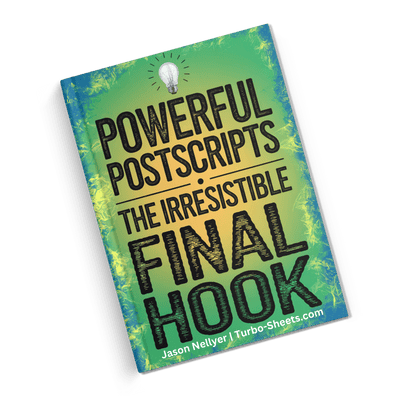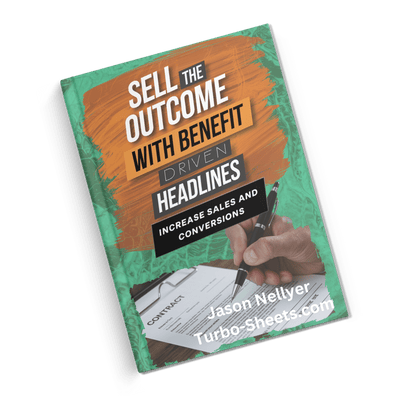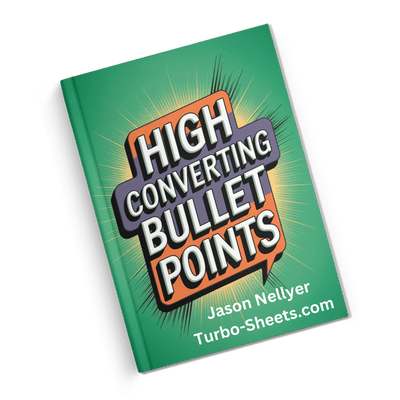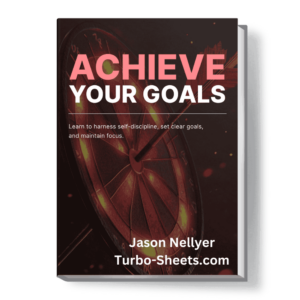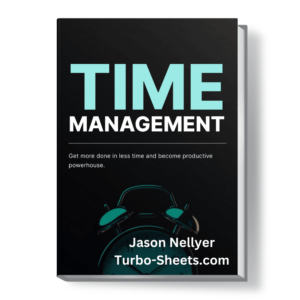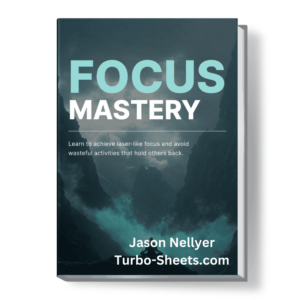🔥 Take Charge Of Your Blog With My Expert Tips and Tools! | Empowering You With My Blog and Resources!
"Survey Request" Emails
Let Us Know!
Fancy knowing exactly what your customers are thinking? What if you could tap into their desires, their gripes, their secret wish lists for [name of your product]? Sounds like a dream, right?
It's not just a pipe dream! Asking for feedback can truly transform how you connect with your audience.
But isn't bugging folks with surveys a quick route to 'unsubscribe'?
Fair point. Bombarding inboxes isn't the way. It's about being smart and offering value in return.
So, how do you get those golden nuggets of customer insight without being a pain? Let's explore.
In This Article
Crafting Killer Questions
Ask About Product Preferences
Want to know their favourite features? 🤩 Asking about product preferences in your survey request emails can give you amazing insights. You might uncover hidden gems you didn't even know were popular. This helps you focus development where it truly counts. Knowing what they value most is pure gold.
It's like peeking into their minds!
Consider questions like, "Which features of [name of your product] do you use most often and why?". This open-ended approach can reveal unexpected uses and desires. Understanding their habits allows for smarter improvements. Plus, it makes them feel heard.
Their opinions matter, right?
Another angle is to ask about their ideal version of [name of your product]. "If you could add one new feature to [name of your product], what would it be and why?". This sparks creativity and can lead to your next big innovation. Imagine building exactly what they're dreaming of.
Future-proofing your [name of your product] starts here.
Gathering Feature Requests
Got a hunch about a new addition? 🤔 Your survey request emails are perfect for gathering feature requests directly from the source. Don't just guess what they want; ask them! This prevents wasted effort on unwanted bells and whistles. Real user needs should drive your roadmap.
Stop building in the dark!
Phrase questions like, "Are there any features you feel are currently missing from [name of your product] that would make your experience better?". Be open to all suggestions, even the wild ones. Sometimes the best ideas come from the most unexpected places. Embrace their creativity.
They're the ones using it daily.
You could also present a few potential features and ask them to rank their interest. "Of the following potential new features, which three would you find most valuable?". This helps prioritise development based on actual demand. Data-driven decisions are the smartest ones.
Let them guide your next steps.
Understanding Customer Needs
What problems are your customers trying to solve with [name of your product]? 🤔 Your survey request emails can dig deep into understanding customer needs. Knowing their pain points allows you to position [name of your product] as the ultimate solution. It's about more than just features; it's about outcomes.
What keeps them up at night?
Ask questions such as, "What is the main problem that [name of your product] helps you solve?". Their answers will reveal the core value proposition from their perspective. This can inform your marketing and messaging. Speak their language.
Connect with them on a deeper level.
Consider exploring their workflows and how [name of your product] fits in. "Could you describe how you typically use [name of your product] in your day-to-day activities?". This provides context and highlights areas for improvement in their overall experience. See the bigger picture.
Make their lives easier.
Timing is Everything
Post-Purchase Feedback
Strike while the iron's hot! 🔥 Sending survey request emails shortly after a purchase is a prime opportunity. Their experience is fresh in their minds, both good and bad. This immediacy leads to more accurate and detailed feedback. Capture that initial reaction.
Don't let those thoughts fade away.
A simple follow-up a few days after delivery can work wonders. "How happy are you with your recent purchase of [name of your product]?". Keep it concise and focused on their satisfaction. A quick rating scale can be very effective. Make it super easy for them.
Their first impressions count massively.
For digital products or services, consider timing the survey after a key milestone or a certain period of usage. "Now that you've been using [name of your product] for a week, how has your experience been?". This allows them to form a more informed opinion. Give them time to explore.
Let them get to know you.
Following Key Interactions
Did a customer just contact support? 🤔 Sending a survey request email after key interactions, like a support ticket closure, is crucial. This helps gauge their satisfaction with your service. It's a chance to identify areas where your team shines and where improvements are needed. Service quality matters.
Turn negative experiences into learning opportunities.
Keep the survey focused on the specific interaction. "How satisfied were you with the support you received regarding your recent issue?". This provides targeted feedback. A short, specific survey is more likely to get a response. Respect their time.
Show you care about their whole experience.
Similarly, if a customer used a new feature, follow up to see how it went. "What did you think of the new [feature name] in [name of your product]? Was it helpful?". This gives you direct insight into the success of your latest developments. Get immediate reactions.
Know what's hitting the mark.
Regular Check-Ins
Don't be a stranger! 👋 Regular check-in survey request emails can help maintain a continuous feedback loop. This shows your customers that you consistently value their opinions. It also allows you to track changes in satisfaction over time. Stay connected.
Keep the conversation flowing.
Consider sending out a short quarterly survey. "How is [name of your product] working for you overall?". This provides a broader perspective. Keep it brief to avoid survey fatigue. Little and often can be very effective.
Track your progress and adapt.
You could also segment your audience and send more focused check-ins based on their usage or history with [name of your product]. This allows for more relevant questions. Personalisation can boost response rates. Make it feel like it's just for them.
Show you truly understand them.
Making it Effortless
Keep it Short and Sweet
Time is precious! ⏳ Your survey request emails should link to surveys that are quick to complete. Respect your customers' busy schedules by keeping it concise. Long, rambling surveys are a major turn-off. Get straight to the point.
Value their time and attention.
Aim for no more than 5-10 questions if possible. Focus on the most crucial information you need. Prioritise your objectives. Every question should have a clear purpose. Don't ask just for the sake of it.
Make it a breeze to complete.
Use question types that are easy to answer, like multiple-choice or rating scales. Open-ended questions are valuable but use them sparingly. Make it as frictionless as possible. A smooth experience encourages participation.
Remove any barriers to response.
Mobile-Friendly Design
On the go? 📱 Ensure your surveys are fully mobile-friendly. Many people will open your survey request emails and complete the survey on their phones. A clunky, non-responsive design will lead to abandonment. Make it look good on any device.
Cater to their convenience.
Use a survey platform that automatically optimises for mobile. Test it on different screen sizes to ensure it looks and functions perfectly. A seamless experience is key. Don't frustrate your mobile users.
Reach them wherever they are.
Keep the layout clean and uncluttered. Use large enough buttons and clear fonts. Make it easy to navigate with thumbs. A good mobile experience shows you care about the details.
Small things can make a big difference.
Clear Call to Action
Tell them what to do! 📣 Your survey request emails need a clear and compelling call to action. Make it obvious what you want them to do and why. Use action-oriented language and prominent buttons. Guide them clearly.
Don't leave them guessing.
Use phrases like "Take our quick survey now" or "Share your feedback here". Make the button visually appealing and easy to click. Placement is also important; make it hard to miss. Grab their attention immediately.
Make it an irresistible invitation.
Reinforce the benefit of taking the survey in your call to action. "Help us improve [name of your product] - take our short survey". Remind them that their input matters. Connect their action to a positive outcome.
Show them their contribution counts.
What's In It For Them?
Offer Incentives (Carefully)
A little nudge can help! 😉 Consider offering a small incentive for completing your survey. This could be a discount code, entry into a prize draw, or early access to new features. Make it relevant to your audience. A thoughtful reward can boost response rates.
Give them a reason to participate.
Be clear about the incentive in your survey request email. State the reward and how they will receive it. Ensure the value of the incentive aligns with the effort required. Don't over-promise and under-deliver. Transparency builds trust.
Make it a win-win situation.
However, be cautious not to bias the results with overly generous incentives. You want honest feedback, not just participation for the sake of the reward. Keep it balanced. The focus should still be on genuine insights.
Quality over quantity in responses.
Explain the Impact of Their Feedback
Show them they're making a difference! 💪 In your survey request emails, clearly explain how their feedback will be used. Tell them that their opinions will directly influence the future of [name of your product]. Make them feel like valued contributors. Their voice matters.
Connect their input to tangible improvements.
Phrases like, "Your feedback will help us make [name of your product] even better for you" can be effective. Be specific if possible. "Based on past feedback, we've implemented [previous improvement]". Show them the results of previous surveys.
Prove that you listen.
Emphasise that their insights are crucial for understanding their needs and preferences. Highlight that you're committed to serving them better. Make it about them. A customer-centric approach resonates deeply.
Build a community of collaborators.
Personalise the Request
Make it feel personal! 😊 Generic survey request emails often get ignored. Address your customers by name and reference their past interactions with [name of your product] if possible. Personalisation shows you see them as individuals. Make them feel special.
Speak directly to them.
Segment your email list if you can and tailor the survey request based on their purchase history or usage patterns. This makes the survey more relevant to them. Relevance increases engagement. Show you pay attention to their journey.
Make it about their unique experience.
Even a simple "As a valued customer..." can make a difference. A little bit of warmth goes a long way. Make them feel appreciated. Building strong relationships is key.
Foster a sense of connection.
Analysing Your Goldmine
Organise the Data Effectively
Don't let the data overwhelm you! 🤯 Once responses start coming in, organise the data effectively. Use spreadsheets or survey analysis tools to categorise and filter the information. A structured approach is essential for extracting meaningful insights. Get your ducks in a row.
Turn chaos into clarity.
Look for common themes and patterns in the responses. Identify recurring issues or frequently requested features. Visualise the data with charts and graphs to make trends clearer. Data visualisation is your friend.
See the story the numbers tell.
Pay attention to both quantitative (numerical ratings) and qualitative (open-ended comments) data. The "why" behind the numbers is often just as important as the numbers themselves. Combine both perspectives for a richer understanding.
Get the full picture.
Identify Key Trends
What's the big picture? 🧐 Analyse your survey data to identify key trends in customer preferences and pain points. Are there specific features that consistently receive high praise or criticism? Are there common requests for new functionalities? Spotting these trends is crucial for informed decision-making.
See what's gaining traction.
Look for correlations between different responses. For example, do customers who rate a certain feature highly also tend to be long-term users? Uncovering these connections can reveal valuable insights. Dig deeper into the relationships.
Understand the interdependencies.
Compare your current survey results with previous surveys to track changes over time. Are customer satisfaction levels improving or declining? Are new trends emerging? Longitudinal analysis provides valuable context. Monitor your progress.
Keep your finger on the pulse.
Segment Your Findings
Not all customers are the same! 🧑🤝🧑 Segment your survey responses based on customer demographics, purchase history, or usage patterns. This allows you to understand the needs and preferences of different groups within your audience. Avoid a one-size-fits-all approach.
Tailor your strategies to specific groups.
For example, you might find that new customers have different feature requests than long-term users. Understanding these differences allows you to address their specific needs more effectively. Customise your approach.
Meet them where they are.
Segmentation can also reveal opportunities for targeted marketing or product development. By understanding the unique needs of different segments, you can create more relevant offerings. Cater to their individual requirements.
Speak to their specific needs.
Acting on Feedback
Prioritise Based on Insights
Don't let the feedback gather dust! 🧹 Use the insights gained from your surveys to prioritise your product development and business decisions. Focus on addressing the most pressing customer needs and implementing the most requested features. Turn feedback into action.
Make data-driven choices.
Create a roadmap based on the survey findings. Clearly outline which improvements and features will be implemented and in what order. Transparency with your team is key. Align your efforts with customer expectations.
Show your team the "why".
Communicate the impact of the feedback to your stakeholders. Show them how addressing customer needs directly translates to business value. Data speaks volumes. Make a compelling case for change.
Demonstrate the ROI of listening.
Communicate Changes to Customers
Close the loop! 🔄 Let your customers know that you've heard their feedback and are taking action. Communicate any changes or new features that were implemented as a result of their input. This shows them that their participation was valued and impactful. Make them feel heard.
Show them the fruits of their input.
Send a follow-up email or blog post detailing the updates and specifically mentioning that they were based on customer feedback. This reinforces the value of their participation and encourages future engagement. Acknowledge their contribution publicly.
Build stronger customer loyalty.
Even if you can't implement every suggestion, acknowledge the feedback and explain your reasoning. Transparency is key to maintaining trust. Show you've considered all opinions.
Be open and honest in your communication.
Iterate and Improve Continuously
Feedback is a gift that keeps on giving! 🎁 View surveys as an ongoing process, not a one-off event. Continuously gather feedback, analyse the results, and iterate on your [name of your product] and services. Embrace a culture of continuous improvement. Never stop listening.
Stay agile and responsive.
Regularly review your survey questions to ensure they are still relevant and providing valuable insights. Adapt your approach based on the evolving needs of your customers and your business. Keep your finger on the pulse of change.
Stay ahead of the curve.
By consistently seeking and acting on customer feedback, you can build a [name of your product] and a business that truly resonates with your audience. This fosters loyalty and drives long-term success. Make feedback a cornerstone of your strategy.
Build a customer-centric organisation.
Different Survey Types
Customer Satisfaction (CSAT) Surveys
How happy are they right now? 😊 Customer Satisfaction (CSAT) surveys are great for gauging immediate satisfaction with a specific interaction or your [name of your product] overall. They typically ask a simple question like, "How satisfied were you with your experience?". Keep it focused on a single point.
Get a snapshot of their current mood.
Use a simple rating scale (e.g., 1-5 stars or a smiley face scale) for easy responses. These surveys are quick to complete and provide a clear metric of satisfaction levels. Simplicity is key for high response rates. Make it effortless to answer.
Measure immediate delight (or disappointment).
Deploy CSAT surveys after key touchpoints, such as after a purchase or a support interaction. This allows you to capture feedback while the experience is still fresh in their minds. Timeliness is crucial for accurate feedback.
Capture the moment of truth.
Net Promoter Score (NPS) Surveys
Would they recommend you? 🤔 Net Promoter Score (NPS) surveys measure customer loyalty and advocacy. The core question is, "How likely are you to recommend [name of your product] to a friend or colleague?". This single question can provide powerful insights. Gauge their willingness to spread the word.
Identify your biggest fans and potential detractors.
Respondents are typically asked to rate their likelihood on a scale of 0 to 10. Based on their score, they are categorised as Promoters, Passives, or Detractors. This segmentation helps you understand the spectrum of customer sentiment. Know who your champions are.
Follow up with Detractors to understand their concerns and with Promoters to encourage advocacy. This allows you to address issues and leverage your loyal customers. Turn negatives into positives and amplify your successes.
NPS provides a benchmark for loyalty.
Longer Feedback Questionnaires
Need more in-depth insights? 🧐 Longer feedback questionnaires allow you to delve deeper into specific aspects of your [name of your product] or customer experience. These are useful for gathering detailed information on preferences, feature requests, or pain points. Be strategic with your questions.
Uncover the "why" behind the "what".
Use a mix of question types, including multiple-choice, rating scales, and open-ended questions, to gather a variety of data. Structure the questionnaire logically and group related questions together. Make it easy to follow.
Guide them through the topics smoothly.
Clearly communicate the estimated time it will take to complete the survey in your survey request email. Be respectful of their time. Longer surveys may require an incentive to encourage participation. Set realistic expectations.
Transparency builds trust and manages expectations.
Avoiding Survey Fatigue
Don't Over-Survey
Less is often more! 🙅♀️ Avoid bombarding your customers with too many survey request emails. Over-surveying can lead to annoyance and lower response rates over time. Be selective and strategic about when and how often you ask for feedback. Respect their inbox.
Quality over quantity in survey requests.
Coordinate your survey efforts across different teams within your organisation to avoid sending multiple requests for feedback on similar topics. A unified approach prevents duplication and respects customer time. Ensure internal communication.
Present a united front to your customers.
Consider the frequency with which individual customers are being asked to participate in surveys. Implement measures to avoid over-contacting the same individuals repeatedly. Manage your outreach carefully.
Be mindful of their overall experience.
Make Each Survey Count
Every survey should have a clear purpose! ✅ Ensure that each survey you send out is focused and aims to gather specific, actionable insights. Avoid asking irrelevant or unnecessary questions. Make every question contribute to your understanding. Be laser-focused.
Don't waste their time (or yours).
Before sending a survey, clearly define your objectives and the information you hope to gain. This will help you craft more effective questions and avoid survey bloat. Plan your survey meticulously.
Have a clear goal in mind.
Regularly review your survey questions to ensure they are still relevant and contributing valuable data. Remove any questions that are no longer providing useful insights. Keep your surveys lean and mean.
Streamline your feedback process.
Offer Options to Opt-Out
Give them control! 🚪 Always provide customers with a clear and easy way to opt-out of receiving future survey request emails. Respecting their preferences is crucial for maintaining a positive relationship. Give them the choice.
Empower them to manage their communication preferences.
Include a prominent unsubscribe link in all your survey request emails. Ensure that the opt-out process is straightforward and their request is honoured promptly. Make it easy for them to say no.
Respect their boundaries.
Consider offering different levels of survey participation, such as the option to receive only occasional, high-priority surveys. This allows customers to stay engaged without feeling overwhelmed. Cater to different preferences.
Provide flexible engagement options.
Promoting Your Survey
Highlight the Benefits of Participation
Sell the value! 📢 In your survey request emails, clearly communicate the benefits of taking the survey for the customer. Emphasise how their feedback will lead to improvements in [name of your product] and their overall experience. Focus on the "what's in it for them".
Make it clear why their input matters.
Use compelling language to explain how their opinions will directly shape the future of [name of your product] and help you better serve their needs. Connect their participation to positive outcomes they will experience. Paint a picture of a better future.
Show them they are part of the solution.
If you're offering an incentive, make sure it's prominently featured in your survey request email. Highlight the reward and how they can claim it upon completion. Make the offer enticing and easy to understand.
Sweeten the deal to encourage participation.
Use Multiple Channels
Reach them where they are! 🌐 Don't rely solely on email to distribute your surveys. Consider using other channels to reach a wider audience and increase response rates. Explore options like in-app notifications, social media posts, or website banners. Diversify your approach.
Meet your customers on their preferred platforms.
Tailor your messaging to each channel. What works well in an email might need to be adapted for a social media post. Optimise your communication for each platform's audience and format. Speak their language on each channel.
Maximise your reach and engagement.
For in-app surveys, trigger them based on specific user actions or milestones. This can lead to more relevant and timely feedback. Contextual surveys often yield better results. Ask for feedback at the right moment.
Capture their immediate in-app experience.
Keep the Request Engaging
Make it interesting! ✨ Your survey request emails don't have to be dry and boring. Use engaging language, a friendly tone, and even a touch of humour (where appropriate for your brand). Make the request feel more like a conversation and less like a demand. Inject some personality.
Make them want to click.
Use visually appealing elements, such as your brand logo or relevant images, to make your survey request email more eye-catching. A well-designed email can improve click-through rates. Make it visually appealing.
First impressions matter, even in survey requests.
Consider posing a compelling question in your survey request email that piques their curiosity and encourages them to click through to the survey. Start a conversation in their inbox. Make them think.
Intrigue can drive engagement.
Measuring Success
Track Response Rates
Numbers tell a story! 📊 Monitor the response rates for each of your surveys. This metric indicates how engaged your audience is and how effective your survey request emails are. A low response rate might signal issues with your survey length, timing, or messaging. Pay attention to the percentages.
Know how many people are listening.
Compare response rates across different survey types, channels, and audience segments. This can help you identify what works best for different groups of your customers. Learn what resonates with whom.
Optimise your approach based on data.
Experiment with different subject lines, email copy, and incentives to see how they impact your response rates. A/B testing can help you refine your survey request strategy. Continuously improve your outreach.
Small tweaks can yield big results.
Analyse the Quality of Feedback
Beyond the numbers! 🤔 Don't just focus on the quantity of responses; also assess the quality of the feedback you receive. Are customers providing thoughtful and detailed answers, especially in open-ended questions? High-quality feedback provides more actionable insights. Look for depth and detail.
Valuable insights are worth more than just numbers.
Look for patterns in the qualitative feedback. Are there recurring themes or specific suggestions that are mentioned frequently? This can highlight key areas of concern or potential opportunities. Identify the common threads.
Understand the nuances behind the ratings.
If you notice a lot of short, unhelpful responses, consider revising your survey questions or offering more guidance on the type of feedback you're looking for. Clear instructions can improve the quality of responses. Guide their input.
Help them help you.
Measure the Impact of Changes
Did it make a difference? 📈 After implementing changes based on survey feedback, track the impact on key metrics such as customer satisfaction, retention rates, or support ticket volume. This helps you understand the ROI of your feedback efforts. See the tangible results.
Connect feedback to business outcomes.
Compare these metrics before and after the implementation of changes. Did customer satisfaction scores improve? Did churn rates decrease? Quantifying the impact demonstrates the value of listening to your customers. Show the positive correlation.
Prove the power of customer-centricity.
Share these results internally to reinforce the importance of customer feedback and encourage continued participation in the survey process. Celebrate your successes and learn from any shortcomings. Foster a feedback-driven culture.
Make customer voice a core value.
Conclusion
Right then, hopefully, this has shed some light on how to get proper tasty feedback from your amazing customers using survey request emails. It's not about being a pain; it's about genuinely wanting to make [name of your product] even better for them. Think of it as having a good old chinwag to find out what they really fancy.
Honestly, putting these bits of advice into action can be a proper game-changer. You'll start seeing trends, understanding what folk truly need, and building a [name of your product] they'll rave about. Plus, showing you're listening builds proper loyalty, and that's priceless, isn't it?
So go on, give it a whirl! Craft those thoughtful survey request emails, ask the right questions, and really listen to what comes back. You might just be surprised at the gold you unearth. Your customers hold the key to making [name of your product] truly shine – go unlock those insights!
Points For Consideration
-
- Keep surveys short and mobile-friendly.
- Explain clearly how feedback will be used.
- Offer a relevant, small incentive.
- Always provide an easy opt-out option.
- Act on the feedback you receive.
Hi! I'm Jason!

Hey there! I'm Jason and i'm here to help you succeed with your online business.
Whether you are an internet marketer or a regular business with a website I can help you succeed.
Looking for more traffic, leads or sales? Stick around, you've come to exactly the right place to help you succeed!
(And yeh, I LOVE coffee!)
Let's Connect!
Subscribe
Join 20,000+ subscribers and get access to my free resources right in your inbox.
Grab This Free Ebook!
Bloggers Swipe File
Never struggle with content ideas again!
Learn How To:
- Write compelling headlines
- Structure engaging posts
- Boost reader engagement
- Increase shares and traffic
- Save time on writing
Pay nil at the checkout!
Hit the button and complete via checkout.
Be Quick! Get It Free Before The Counter Hits Zero!
Grab This Free Ebook!
Hypnotic Openings
Grab attention from the very first sentence!
Learn How To:
- Write curiosity-driven intros
- Use storytelling for impact
- Set the tone instantly
- Create emotional connections
- Keep readers hooked
Pay nil at the checkout!
Hit the button and complete via checkout.
Be Quick! Get It Free Before The Counter Hits Zero!
Grab This Free Ebook!
Click-Worthy Headlines
Boost your open rates with subject lines that demand attention!
Learn How To:
- Write curiosity-driven subjects
- Use power words effectively
- Leverage personalisation
- Create urgency and FOMO
- A/B test for best results
Pay nil at the checkout!
Hit the button and complete via checkout.
Be Quick! Get It Free Before The Counter Hits Zero!
Grab This Free Ebook!
Killer Blog Post Headlines
Struggling to come up with blog titles?
Learn How To:
- Write click-worthy titles
- Use power words effectively
- Optimise for SEO and social
- Create curiosity and urgency
- Increase reader engagement
Pay nil at the checkout!
Hit the button and complete via checkout.
Be Quick! Get It Free Before The Counter Hits Zero!
Grab This Free Ebook!
Persuasive Guarantees
Eliminate buyer hesitation with compelling guarantees that build trust and boost conversions.
Learn How To:
- Craft trust-building guarantees
- Reduce purchase hesitation
- Use social proof effectively
- Make bold but believable claims
- Turn sceptics into buyers
Pay nil at the checkout!
Hit the button and complete via checkout.
Be Quick! Get It Free Before The Counter Hits Zero!
Grab This Free Ebook!
Powerful Postscripts
The last thing readers see is often the most persuasive!
Learn How To:
- Use postscripts for impact
- Reinforce key benefits
- Create urgency effortlessly
- Add emotional appeal
- Boost conversions instantly
Pay nil at the checkout! Hit the button, go to the menu (shopping cart) (no purchase req'd), then complete via checkout.
Be Quick! Get It Free Before The Counter Hits Zero!
Grab This Free Ebook!
CTA Closers
A weak CTA means lost sales!
Learn How To:
- Write clear, action-driven CTAs
- Create urgency and scarcity
- Use persuasive language
- Guide readers effortlessly
- Increase sales and engagement
Pay nil at the checkout!
Hit the button and complete via checkout.
Be Quick! Get It Free Before The Counter Hits Zero!
Grab This Free Ebook!
Sell The Outcome
People don’t buy products - they buy results!
Learn How To:
- Highlight key benefits
- Speak to reader desires
- Create irresistible curiosity
- Tap into emotions effectively
- Increase conversions instantly
Pay nil at the checkout!
Hit the button and complete via checkout.
Be Quick! Get It Free Before The Counter Hits Zero!
Grab This Free Ebook!
Scroll Stoppers
Stand out in crowded feeds with scroll-stopping techniques!
Learn How To:
- Craft eye-catching headlines
- Use power words effectively
- Create curiosity-driven content
- Boost shares and interactions
- Drive more clicks and leads
Pay nil at the checkout!
Hit the button and complete via checkout.
Be Quick! Get It Free Before The Counter Hits Zero!
Grab This Free Ebook!
Perfect Headlines
Your title makes or breaks your blog post!
Learn How To:
- Write SEO-friendly titles
- Grab attention instantly
- Use curiosity for engagement
- Increase shares and clicks
- Convert readers into fans
Pay nil at the checkout!
Hit the button and complete via checkout.
Be Quick! Get It Free Before The Counter Hits Zero!
Grab This Free Ebook!
Convert With Bullet Points
Turn scanners into buyers with bullet points that sell!
Learn How To:
- Highlight key benefits
- Create intrigue effortlessly
- Keep readers engaged
- Maximise sales copy impact
- Make content easy to scan
Pay nil at the checkout!
Hit the button and complete via checkout.
Be Quick! Get It Free Before The Counter Hits Zero!
Grab This Free Ebook!
Action Headlines
Your headline is your first impression - make it count!
Learn How To:
- Use power words strategically
- Create curiosity and intrigue
- Structure headlines for impact
- Make readers take action
- Write for SEO and engagement
Pay nil at the checkout!
Hit the button and complete via checkout.
Be Quick! Get It Free Before The Counter Hits Zero!




